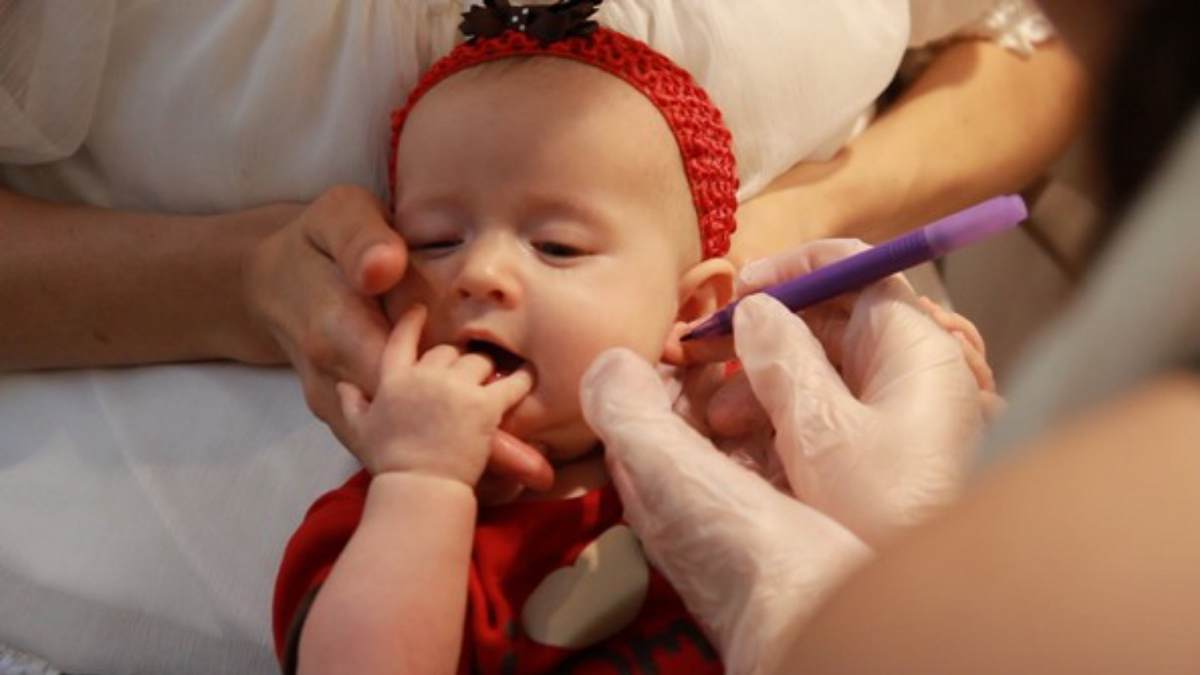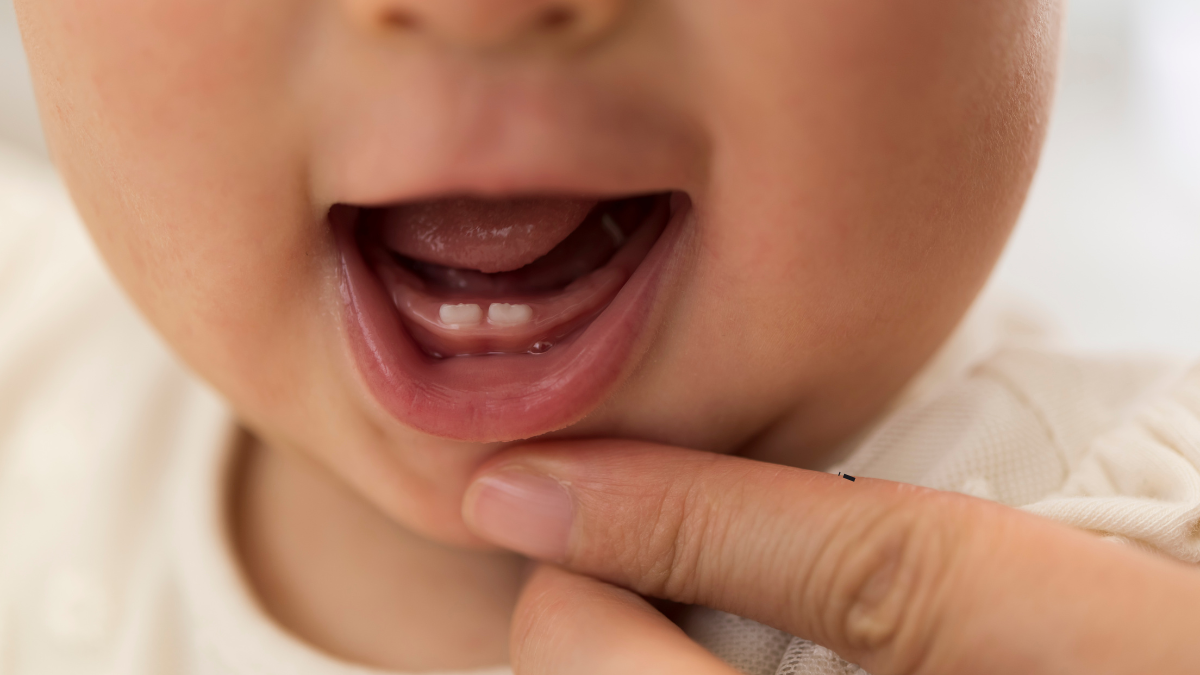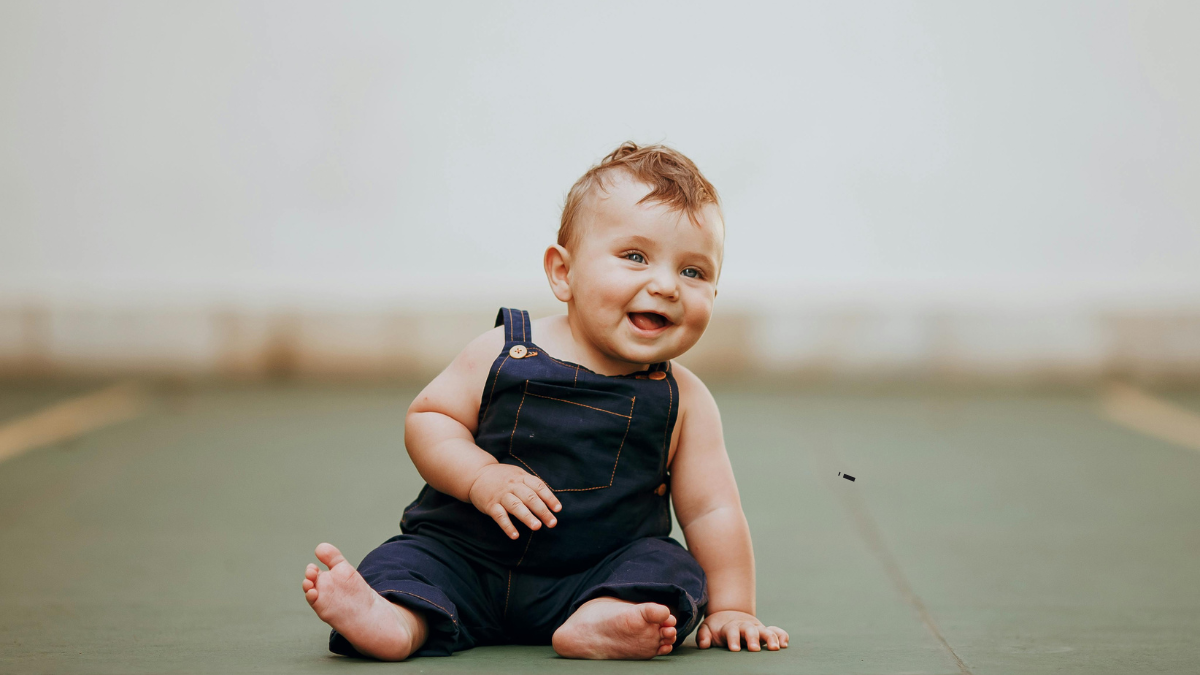As a parent, you would do anything in your power to ensure your baby’s happiness and well-being. You prioritize your baby’s health, comfort, and safety above all else, making decisions that benefit their overall well-being.
Even a simple decision, like your baby’s first ear piercing, is taken very seriously because it marks an important moment for both your baby and you.
When considering piercing your little girl’s ears, you might find yourself overwhelmed with questions such as:
“Is it really the right time to pierce my baby’s ears?”
“What important things should I know before piercing my baby’s ears?”
“Should I be concerned about the possibility of infection?”
Today, we will address these frequently asked questions and offer expert insight into the matter of baby ear piercing.

When Should You Pierce Your Baby’s Ears?
As a parent, you may be wondering, “Is it finally time to pierce my baby’s ears? When is the right time to do it?” The simple answer is that there is no one-size-fits-all response, as several factors need to be taken into account.
As a general rule, though, most pediatricians recommend waiting until your baby is at least 6 months old to pierce their ears. Here are the key reasons why:
Safety and Health Concerns
Babies are born with delicate, thin skin, and their immune systems are still developing. If you pierce your baby’s ears before they are 6 months old, they are more likely to react to the procedure, experiencing infections, irritations, or excessive redness. Their skin is more fragile, and piercing it at a young age can cause damage.
Immune Response
By the time your baby reaches the 6-month mark, their immune system has developed enough to handle minor external irritants like an ear piercing. They are also more capable of managing aftercare, such as keeping the piercing clean and preventing bacteria from entering the wound.
Reduced Risk of Infection
The risk of infection significantly decreases once your baby is 6 months old. Their body has matured enough to resist bacteria, and piercing before this can lead to complications like infections or the rejection of the earrings. Piercing an infant’s ears in an unsanitary environment can also lead to serious issues.
The Healing Process
If your baby experiences a reaction to the piercing while they are younger, the healing process may be slower or less predictable. Babies over 6 months typically heal faster, especially when proper aftercare is followed.
10 Things to Know About Your Baby’s Ear Piercing
Before scheduling an appointment with your piercer, here are some important factors to consider. The following are 10 things all parents should know about baby ear piercing.
1. Hire the Right Piercing Professional
Choosing the right professional to pierce your baby’s ears is one of the most important steps to ensuring your baby’s safety and comfort. Be sure to visit a reputable, licensed piercer who uses sterile equipment and follows a strict hygiene protocol.
It’s essential to confirm that the professional you choose is experienced in piercing infants, as this requires specialized skill and care. Avoid jewelry stores or “mall piercers” as they often lack the necessary experience for infant ear piercings. Consider a pediatrician or nurse practitioner, who may offer this service in some clinics, as a safer option.
Related:8 Things You Shouldn’t Do in Front of Your Baby
2. Use the Right Earrings
Selecting hypoallergenic earrings is crucial for your baby’s safety. Materials like surgical steel, titanium, and 14k gold are recommended for infant ear piercings. Avoid earrings made from nickel, which can irritate your baby’s skin and cause allergic reactions.
The earrings used for the first piercing should be small and flat to minimize pressure on the piercing during the healing process. Your piercer should provide special earrings designed for infants that are softer, more comfortable, and safe during the healing period.
Related: What Your Baby’s Birth Weight Tells You
3. Prepare Yourself for the Procedure
The piercing procedure itself can be unpleasant to witness, but it is usually very quick. The most common method of piercing babies’ ears is using a piercing gun, which applies pressure to create a clean hole. Some professional piercers may use a needle instead, which causes less trauma to the tissue, reducing swelling and irritation.
Most babies cry during the procedure, but it’s typically brief, and they tend to calm down shortly afterward. Some parents schedule the procedure during feeding or nap time to keep their baby relaxed and unaware.
Related:8 Natural Benefits of Breastfeeding for Mom and Baby
4. Expect Some Aftercare
After the piercing, you’ll need to follow proper aftercare to prevent infections. Most piercers will provide specific instructions for cleaning the piercing to prevent infection.
A saline solution is usually recommended to disinfect the area. Be sure not to touch the earrings with dirty hands to prevent transferring bacteria. Clean the piercings gently once or twice a day, and follow any other instructions from your piercer. Be cautious when dressing your baby to avoid accidentally pulling on the earrings.
5. Watch Out for Signs of Infection
While infections are uncommon, they can still occur. Watch for signs like excessive redness, swelling, and pus around the piercing site. If your baby seems unusually irritable, has a fever, or shows signs of infection, contact your doctor.
If an infection occurs, your doctor may need to remove the earrings and prescribe antibiotics. To reduce the risk of infection, avoid changing the earrings too soon after the piercing.
Related: How to Get Your Baby to Accept a Bottle
6. Don’t Remove the Earrings Too Soon
It’s crucial to leave the earrings in for at least 6 weeks, even if the piercing seems to have healed. Removing the earrings too early can cause the hole to close up, requiring a re-piercing. Always follow the aftercare instructions and wait until the full healing period has passed before removing or changing the earrings.
7. Do Not Use Alcohol or Hydrogen Peroxide
While alcohol and hydrogen peroxide might seem like effective disinfectants, they can irritate your baby’s skin and delay the healing process. Instead, use a saline solution or a special piercing cleaner recommended by your piercer. These solutions are gentle and will not harm your baby’s skin.
Related: How to Help Your Baby Turn Head Down
8. Prioritize their Comfort
Babies are highly sensitive to pain and discomfort, so ensure they are as comfortable as possible after the piercing. Extra cuddles and care during the first few days can help them adjust to the new sensation.
Keep your baby’s hair away from the piercing to prevent irritation. Offering additional comfort and keeping them calm during this period will help with the healing process.
Related:10 Ways to Keep Your Baby’s Skin Healthy
9. Look Out for Allergic Reactions
Although rare, some babies may have allergic reactions to the earrings. Watch for signs of redness, swelling, or an itchy rash around the piercing. If these symptoms occur, contact your doctor immediately. Usually, switching to hypoallergenic earrings like titanium or 14k gold will resolve the issue.
10. Consider Cultural and Family Preferences
In many cultures, piercing a baby’s ears is a rite of passage. If you are piercing your baby’s ears for cultural reasons, ensure you follow proper procedures and aftercare. However, if you’re unsure or not yet ready, there’s no rush. You can wait until your baby is older, and if they are female, they can even choose their own earrings later on.
Conclusion
The decision to pierce your baby’s ears is entirely personal. If you choose to go ahead with the procedure, it’s important to take the necessary precautions, choose a skilled professional, and provide proper aftercare. While there are risks involved, following the right steps will ensure your baby’s safety and comfort.
Before making your final decision, take time to consider your baby’s age, health, and family traditions. Speak with your pediatrician, consult other parents, and ensure that you’re making the right choice for both you and your baby.
Save the pin for later




